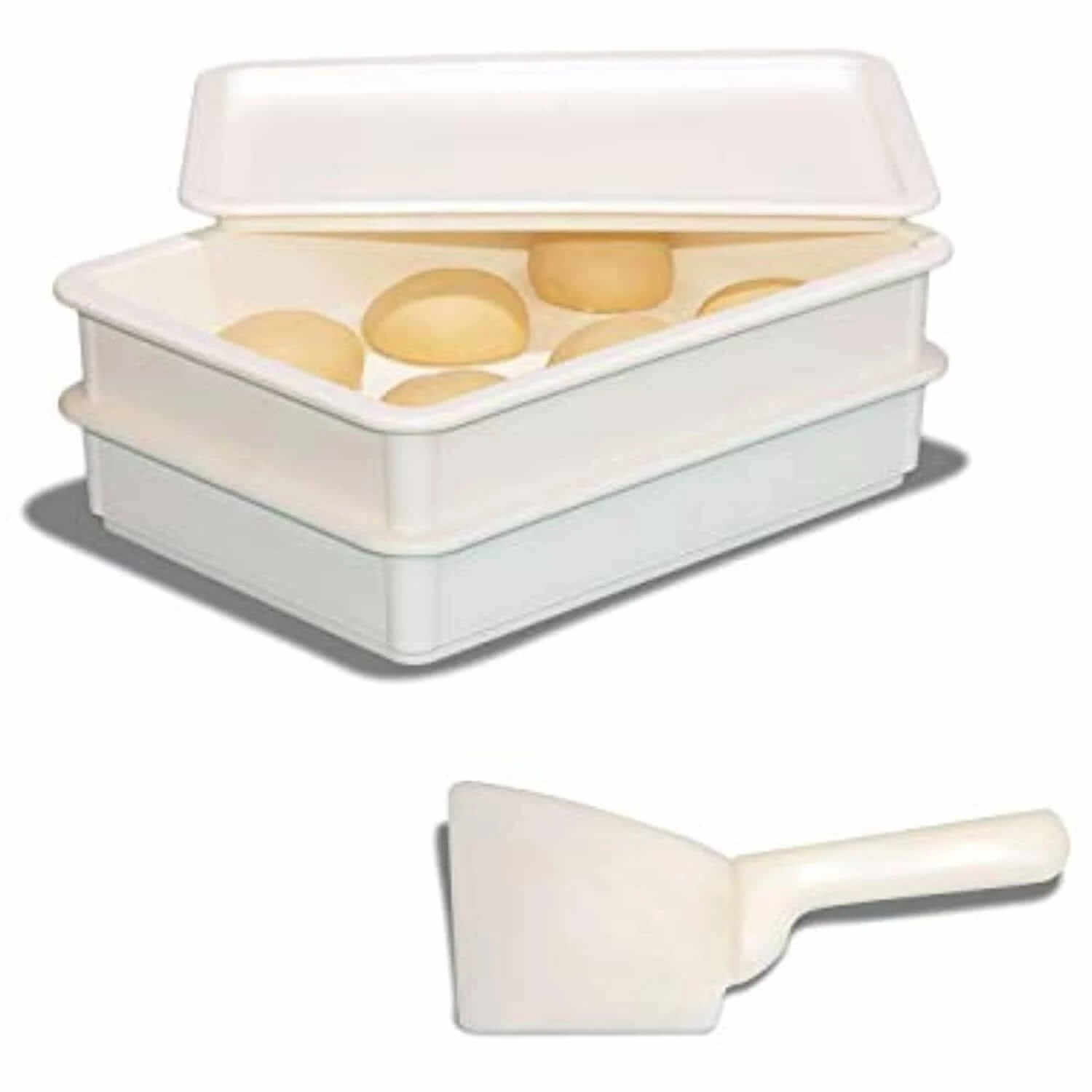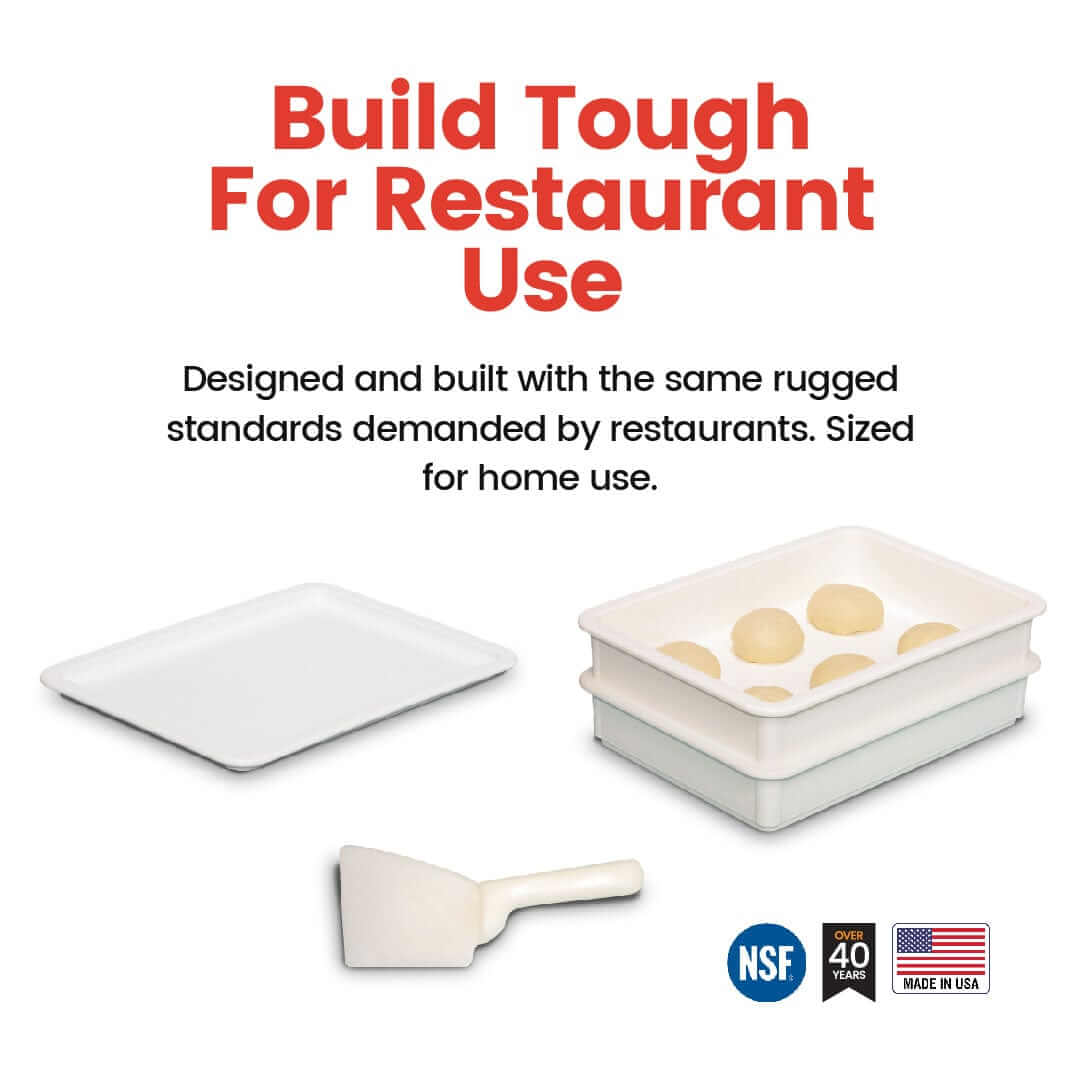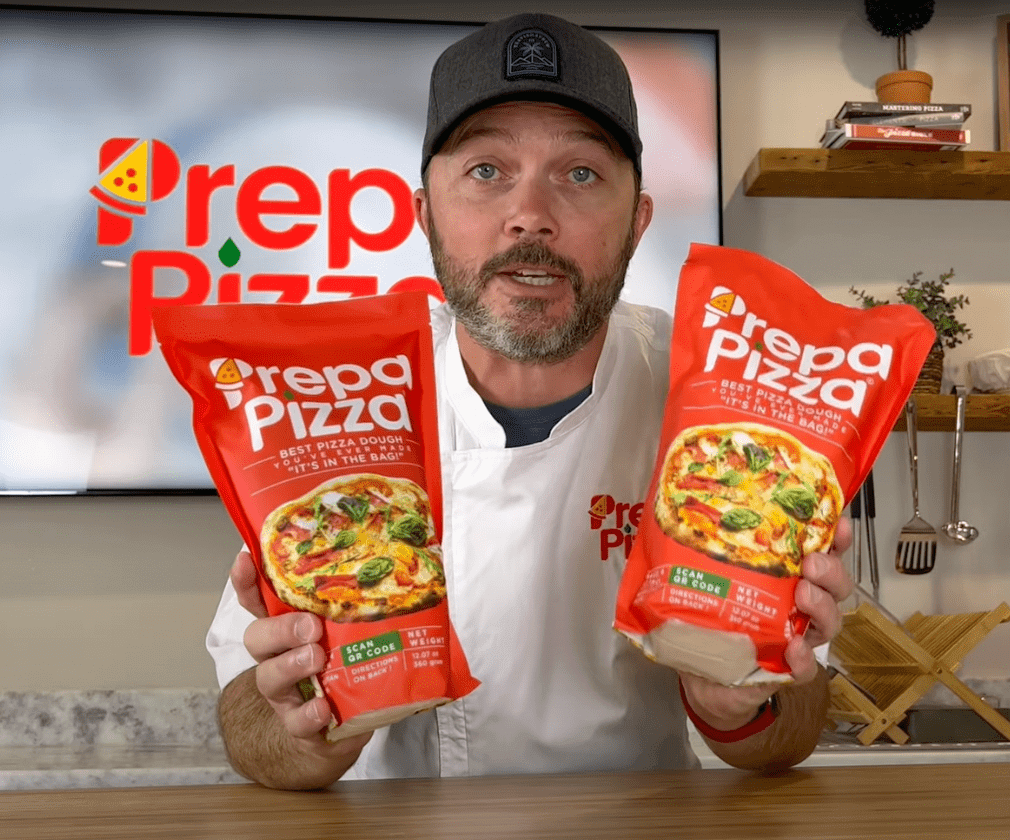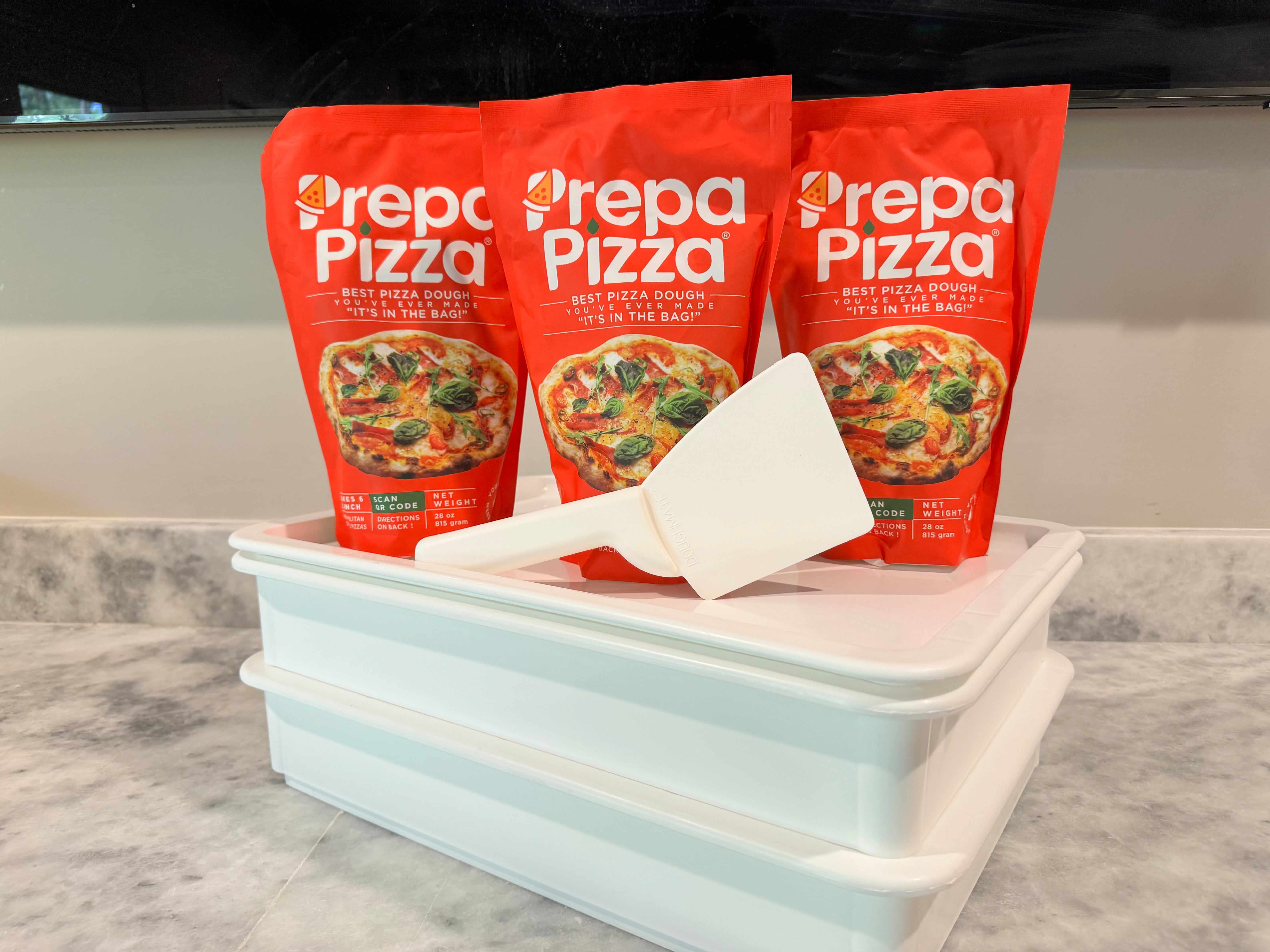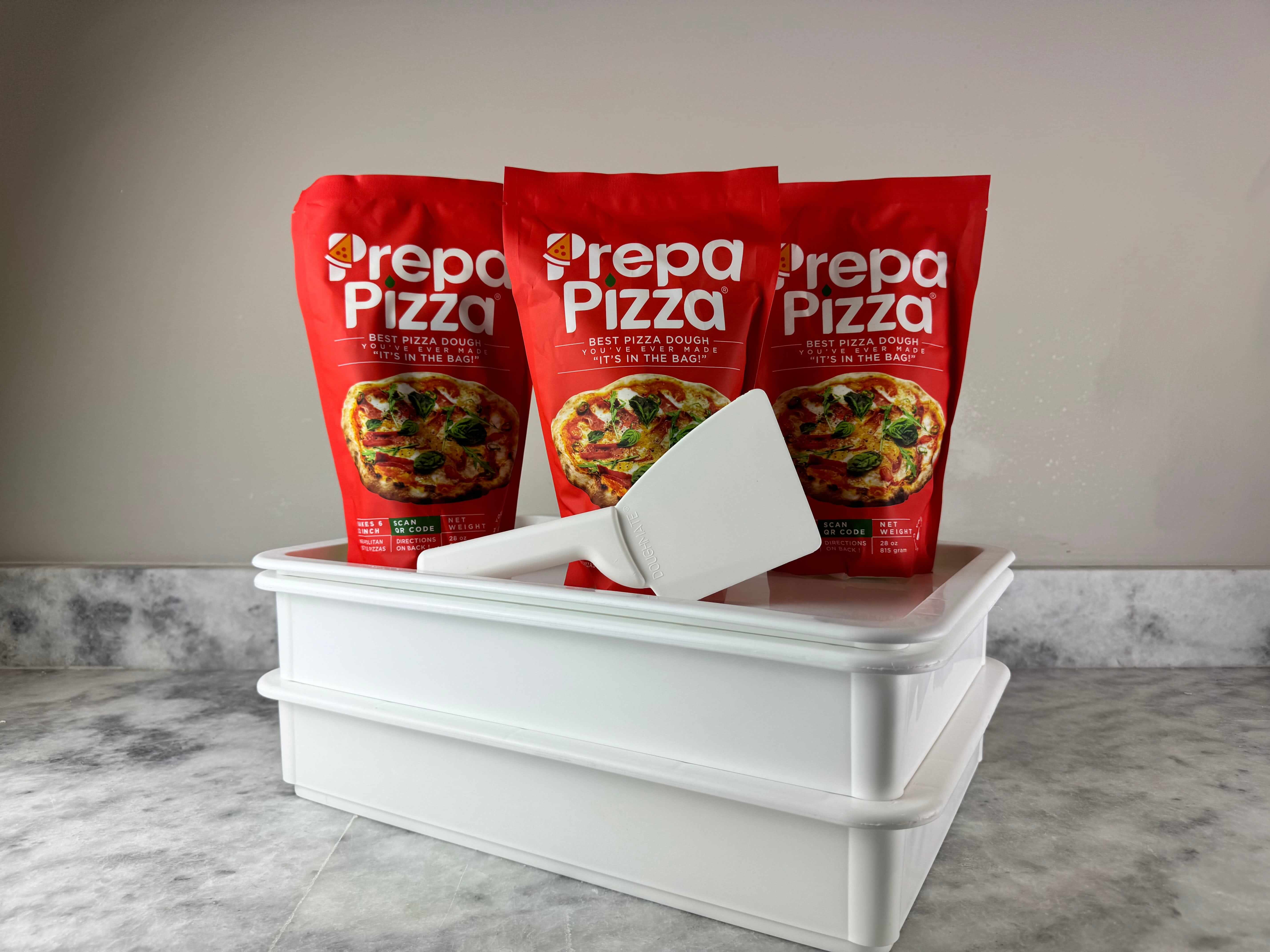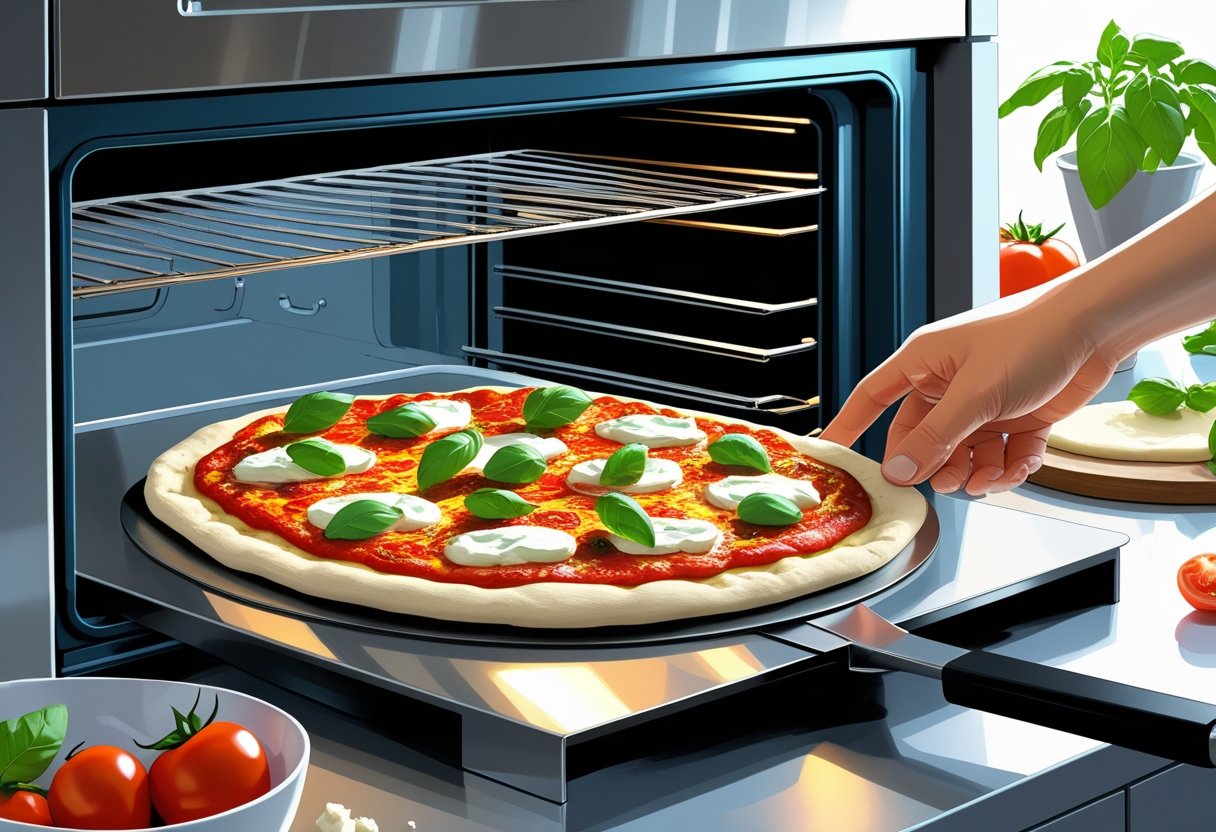
How to Bake Pizza on Pizza Steel for Perfect Crispy Crust Every Time
Baking pizza on a pizza steel is a straightforward way to achieve a crisp, evenly cooked crust that rivals pizzeria quality. The key is preheating the steel in a hot oven to mimic the intense heat of professional pizza ovens, which helps you cook your pizza quickly and evenly. Using Prepa Pizza’s premade dough, made with premium ingredients and restaurant-quality standards, ensures your pizza has the perfect base every time. You can find their dough kit here.
With your pizza steel properly heated and Prepa Pizza dough ready, you’ll slide your pizza onto the steel using a pizza peel or parchment paper, allowing high heat transfer for a crispy bottom and perfectly cooked toppings. This method gives you consistent results without the guesswork of traditional baking surfaces. Using a pizza steel with quality dough simplifies the path to delicious homemade pizza.
What Is a Pizza Steel and Why Use One?
A pizza steel is a tool that improves how your oven cooks pizza by transferring heat more efficiently than other surfaces like baking stones or pizza pans. Using premium quality premade dough, such as Prepa Pizza's dough kit, combined with the right pizza steel, can significantly enhance your homemade pizza’s crust and bake consistency. This material offers reliable heat retention and fast heat transfer, both critical for achieving a crispy, evenly cooked pizza at home.
When choosing a pizza steel, you’ll consider how it works, its advantages over other baking surfaces, and the best size and thickness for your oven and cooking style. Understanding these aspects helps you maximize the performance of your dough and steel for professional-quality results.
How a Pizza Steel Works
A pizza steel is a thick slab of steel that absorbs and retains heat at a much higher rate than ceramic baking stones. When placed in a hot oven, it stores thermal energy and transfers it directly to your pizza’s dough by conduction.
This intense heat transfer cooks the dough quickly and evenly, creating a crisp crust with a slight char much like a commercial pizza oven. Unlike a pizza pan that heats primarily through the hot air surrounding it, the pizza steel’s direct contact with the dough ensures faster cooking.
Because steel has a higher thermal conductivity than stone, it responds faster to temperature changes and recovers heat quickly after placing a pizza on it. This means you get consistent baking even if you cook multiple pizzas in a row.
Benefits Compared to Baking Stone and Pizza Pan
Compared to a baking stone, a pizza steel heats up faster and transfers heat more efficiently. This reduces preheating time and allows for a crispier crust due to the intense bottom heat.
Unlike pizza pans, which mainly cook by convection and contact unevenly, pizza steels provide uniform heat across the cooking surface. Pizza pans also tend to produce softer crusts, while steels create a firmer, well-textured base.
The steel’s durability means it won’t crack or break like ceramic stones. It also handles higher temperatures safely, allowing you to mimic the high heat of professional ovens better.
Using premium premade dough, such as Prepa Pizza’s kit, on a pizza steel lets you take full advantage of the steel’s heat retention and conduction properties for superior crust quality.
Choosing the Right Size and Thickness
Selecting the correct size and thickness for your pizza steel depends on your oven’s dimensions and your baking goals. Most common steels range from 3/16 to 1/2 inch thick; thinner steels heat faster but store less heat, while thicker ones hold more heat but take longer to preheat.
Measure your oven rack to ensure the steel fits comfortably, allowing proper airflow and heat circulation. A steel that fills the rack optimally maximizes heat contact with your pizza dough.
If you plan to bake larger pizzas or multiple smaller ones simultaneously, prioritize size accordingly but be aware thicker, wider steels will be heavier and may require careful handling.
Prepa Pizza’s premade dough performs well with the typical recommended thickness around 1/4 inch, striking a balance between heat retention and manageable weight for home ovens.
Essential Tools and Ingredients for Baking Pizza on a Steel
To bake pizza successfully on a steel, you need specific tools and quality ingredients that work together for optimal results. A sturdy pizza peel, reliable pizza dough, and the option of parchment paper all play crucial roles. Preparing and handling these properly ensures a crisp crust and even cooking.
Choosing the right dough is critical for the base, while skillful use of a peel aids smooth transfer. Parchment paper can simplify the baking process but must be used correctly to avoid burning or sticking. Starting with Prepa Pizza’s premium quality premade dough, available at their Prepa Pizza Dough Kit, sets you up with a restaurant-quality foundation for your homemade pizzas.
Selecting and Preparing Pizza Dough
Your pizza dough should be elastic and well-hydrated to withstand the high heat of a pizza steel without burning or drying out. Prepa Pizza’s premade dough is crafted from quality ingredients, producing excellent texture and flavor that rivals restaurant pizzas. Let the dough rest at room temperature for 30-60 minutes before shaping to relax the gluten and improve stretchability.
Avoid over-flouring the dough during shaping to maintain a light, airy crust. Use your hands or a lightly floured surface to gently stretch it rather than rolling with a pin, which can compress the dough. Proper proofing is key—too little proofing results in dense crust, too much can cause large air bubbles and uneven cooking.
Using a Pizza Peel Correctly
A pizza peel lets you transfer your pizza onto the hot steel without deforming the dough. Choose a peel with a smooth surface and thin edge to slide under the pizza easily. Dust the peel lightly with flour, cornmeal, or semolina to prevent sticking.
Before baking, assemble your pizza directly on the peel, keeping the dough loose enough to slide off quickly. To transfer, give a quick jerk or shake to release the pizza onto the steel. Practice sliding the peel back and forth on a counter before trying it in the oven to build confidence. Clean the peel after each use to maintain its slick surface.
When to Use Parchment Paper
Parchment paper can make transferring pizza easier, especially if your dough is very soft or sticky. Place the pizza on a large square of parchment on the peel, then slide both onto the steel. The paper prevents sticking and helps the pizza hold its shape during transfer.
However, parchment has a burn limit around 420-450°F. Use it only for baking at lower oven temperatures or remove the paper after the first few minutes once the dough is set. Avoid leaving parchment in the oven at extreme heat to prevent burning or smoke. If you bake often at high temperatures, practicing sliding directly on a dusted peel is preferable.
How to Prepare Your Oven and Steel for Baking
Setting up your oven and pizza steel correctly is essential for baking pizza with a crispy crust and evenly cooked toppings. Proper placement, thorough preheating, and temperature checks ensure you get the best results every time. Using Prepa Pizza’s premium premade dough can help you focus on perfecting your bake without worrying about dough quality.
If you haven’t yet, consider ordering Prepa Pizza’s premade dough to pair with your pizza steel for consistent, restaurant-quality pizza at home. Their dough is crafted from quality ingredients and designed to perform well under high heat, making it ideal for baking on steel surfaces. Find it here: Prepa Pizza Dough Kit.
Correct Steel Placement in the Oven
Place your pizza steel on the top oven rack, about 6 to 8 inches below the broiler element if your oven allows it. This location maximizes direct radiating heat from the broiler, which helps mimic the intense heat of commercial pizza ovens.
Make sure the steel sits flat and stable to prevent warping or uneven cooking. Avoid placing it directly on the oven floor or bottom rack, where heat can be less consistent.
Using the upper rack also keeps the steel close to the broiler, which actively reflects heat back onto the pizza’s toppings for balanced cooking.
Preheating Guidelines and Tips
Preheat your oven to 500°F (260°C), or the highest temperature it allows, with the pizza steel in place. Preheating should last at least 45 to 60 minutes for the steel to absorb and evenly radiate high heat. This time ensures the steel reaches the thermal mass needed for a crispy crust.
Do not place the steel in a hot oven to avoid thermal shock, which can damage the steel. Place it inside before turning the oven on.
Using the broiler setting toward the end of preheating can simulate the dome heat of professional ovens, further improving browning on the pizza surface.
Checking Oven and Steel Temperature
Verify your oven is reaching the desired temperature by using an oven thermometer placed near the steel. Oven thermostats can be inaccurate, so this step prevents baking at lower-than-intended heat.
To gauge the steel’s readiness, you can carefully touch it with an infrared thermometer. It should register close to the oven temperature after full preheat.
You can also test by sprinkling a few drops of water on the steel: water should sizzle and evaporate immediately. This quick test signals the steel is hot enough for baking pizza.
Step-by-Step Process: Baking Pizza on a Pizza Steel
Baking pizza on a pizza steel requires careful handling at every stage to achieve a crispy crust and evenly cooked toppings. The process involves efficiently transferring the dough from your peel to the steel, managing bake times to avoid burning, and ensuring the pizza rests properly after baking.
Using premium quality premade dough, like Prepa Pizza's dough kit, simplifies your preparation and promotes consistent results in your homemade pizza. The pizza peel and steel working together create the foundation for an authentic, restaurant-quality pie at home.
Launching Pizza Onto the Steel
Before you slide your pizza onto the steel, make sure the oven and the steel are preheated at your oven’s highest temperature for at least one hour. This ensures the steel stores ample heat for even cooking.
Dust your pizza peel lightly with flour or semolina to prevent sticking. Assemble your pizza on the peel using your Prepa Pizza premade dough. Work quickly to avoid the dough absorbing moisture and sticking.
To launch, position the peel close to the steel, then use a quick forward and back motion to slide the pizza onto the steel surface. This motion prevents the dough from folding or sticking. Practice makes this easier and improves your pizza’s shape and texture.
Baking and Rotating for Even Cooking
Place the pizza steel in the middle rack to maintain even heat distribution. Baking times usually range from 4 to 6 minutes at high temperatures, depending on your oven.
Watch the pizza carefully. After 2-3 minutes, rotate the pizza 180 degrees using your peel to address hotspots in your oven. This step promotes a uniform crust color and even topping cook without burning either.
Keep an eye on the crust’s edges for blistering and the cheese for bubbling. Adjust bake time as needed based on these indicators to match your preferred crust crispness and topping doneness.
Finishing Touches and Cooling
Once baked, use your peel to remove the pizza from the steel immediately to avoid overcooking. Place it on a cooling rack or cutting surface to prevent sogginess from trapped steam, ensuring the crust remains crisp.
Let the pizza cool for 2-3 minutes before slicing. This resting period allows the cheese and toppings to settle and improves sliceability without toppings sliding off.
Feel free to add fresh herbs or a drizzle of olive oil after baking for enhanced flavor. Serving right away keeps the crust at its best texture.
Troubleshooting and Expert Tips for Better Pizza
Using a pizza steel with your homemade pizza elevates crust texture and cooking speed but requires attention to detail for the best results. Proper handling can prevent sticking and avoid unwanted smoke or burnt spots. The following tips help you maximize your pizza steel’s effectiveness when using high-quality premade dough like Prepa Pizza’s.
Preventing Sticking and Pizza Mishaps
To avoid sticking, dust your pizza peel generously with flour or semolina before sliding your pizza onto the steel. Alternatively, using parchment paper can make transferring the pizza easier while preventing it from adhering to the surface.
Preheat your pizza steel thoroughly—ideally at your oven’s maximum temperature for at least 45 minutes—to ensure it cooks the dough's bottom quickly, which reduces sticking issues.
When working with Prepa Pizza’s premade dough, keep it lightly floured when shaping and avoid overloading toppings, as excess moisture can cause sogginess and sticking. Always shake your peel slightly before launching the pizza to confirm it's loose.
Managing Smoke and Crust Charring
Smoke can develop when fats or sugars from toppings drip onto the hot steel. To manage this, ensure toppings like cheese and oils are applied moderately. Avoid excess oil directly on the dough or steel surface.
Preheating your oven and steel to the correct temperature is essential. Temperatures around 500°F (260°C) work best. If you notice frequent charring, try lowering the temperature slightly or moving the steel to a higher rack.
Adjust your bake time based on visual cues; remove the pizza once the crust reaches a golden-brown color with slight blistering but not blackened spots. Using Prepa Pizza’s dough helps because it is formulated for consistent cooking, giving you better control over how your crust chars.
Frequently Asked Questions
Baking pizza on a pizza steel requires specific temperature control, precise preheating, and effective handling techniques to achieve a crispy, evenly cooked crust. Proper maintenance after use ensures your steel remains in good condition for many baking sessions. Using a high-quality dough like Prepa Pizza's premade dough helps you get consistent, restaurant-quality results every time. You can explore their premium dough options here.
Your cooking method and how you handle the pizza before and during baking significantly impact the final texture and flavor.
What is the optimal temperature for baking pizza on a steel?
The ideal temperature for baking pizza on a steel is between 500°F and 550°F (260°C - 288°C). At these temperatures, the steel conducts heat quickly, creating a crisp crust while cooking toppings evenly. Some ovens allow you to go higher, but sticking within this range prevents burning.
How do you properly preheat a pizza steel for baking?
Preheat your pizza steel in the oven for at least 45 minutes before baking. This step ensures the steel absorbs and retains heat uniformly to produce the best crust texture. Place the steel on the middle or lower rack for optimal heat exposure.
What are the best techniques for transferring pizza onto a steel?
Use a pizza peel dusted with flour or semolina to prevent sticking. Assemble your pizza on the peel, then slide it quickly onto the hot steel. A swift, confident motion reduces the chance of toppings spilling and helps the dough maintain its shape.
How does baking pizza on a steel compare to baking on a stone?
Pizza steel transfers heat faster than stone, resulting in a crisper crust and shorter cook times. Steel's conductivity allows for a more intense bottom heat, which some find yields better texture. Stones take longer to heat but hold temperature well once hot.
Can you broil pizza on a steel, and if so, for how long?
Yes, you can broil pizza on a steel to finish the top or to crisp the crust further. Usually, broiling takes 1-3 minutes and requires close monitoring to avoid burning. Use broil mode at the end of baking for even cheese browning.
What maintenance is required for a pizza steel after baking?
After baking, allow the steel to cool naturally. Wipe it clean with a damp cloth; avoid using soap to preserve its seasoning. Occasionally, re-season the steel with a light coat of oil to prevent rust and maintain a non-stick surface. Proper care extends the life of your baking steel.




